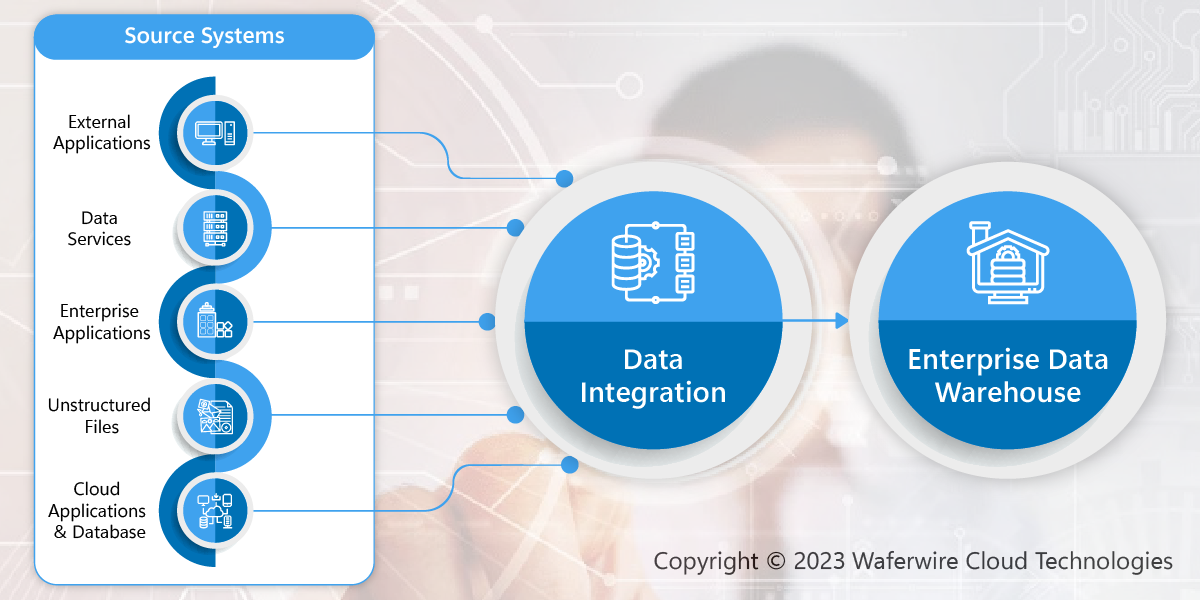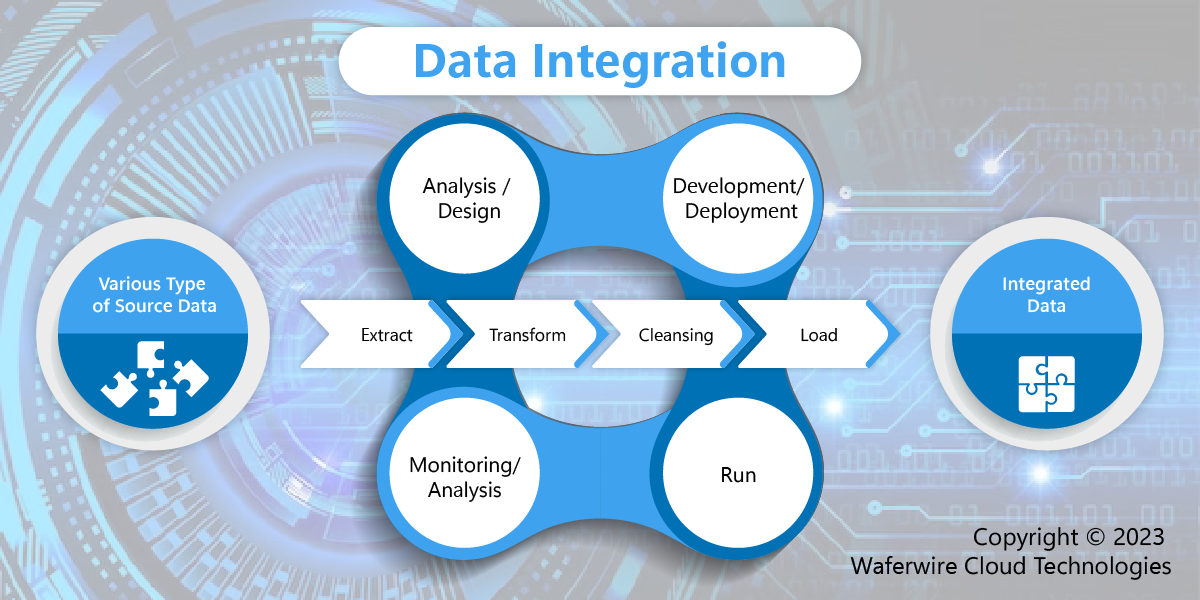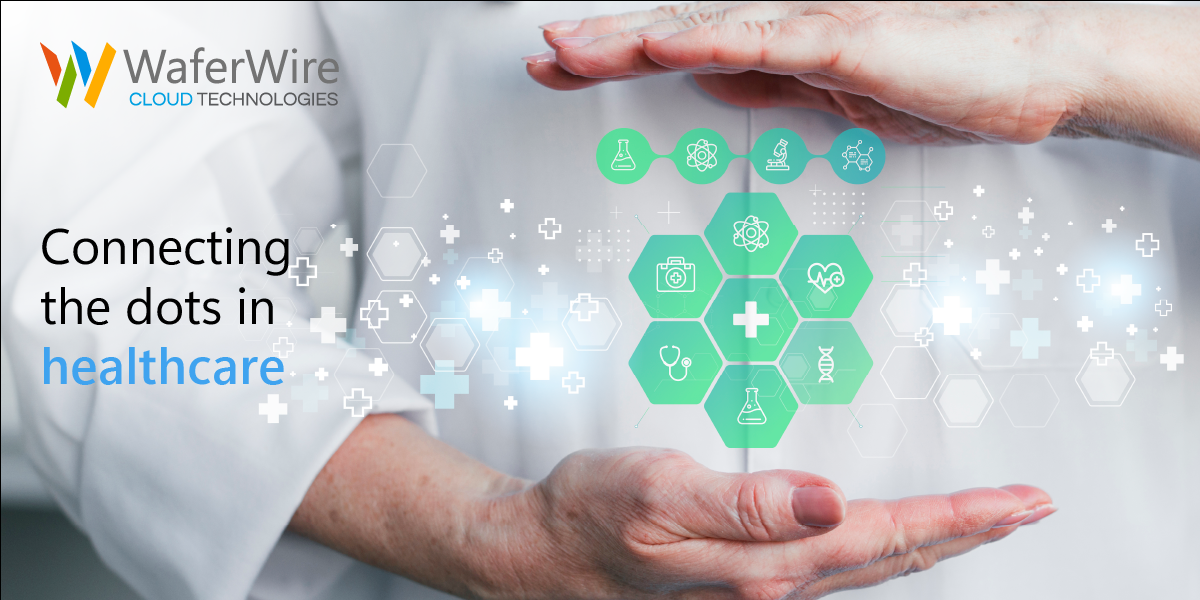The healthcare industry generates a staggering amount of data daily, ranging from electronic health records (EHRs) and laboratory results to wearable device data and administrative records.
Every passing moment witnesses an exponential surge in the generation and analysis of healthcare data. Currently, the healthcare sector is responsible for producing roughly 30% of the world’s total data volume. Projections indicate that by the year 2025, the compound annual growth rate for healthcare data will soar to an impressive 36%.
The need to manage, analyze, and derive insights from this vast pool of data has become increasingly vital. To address this challenge, healthcare organizations are turning to data integration solutions to seamlessly connect and consolidate data from disparate sources.
The need for integrating data from disparate sources:
Healthcare organizations face several compelling reasons to integrate data from diverse sources:
- Comprehensive patient care:
Integrated data enables healthcare providers to access a patient’s complete medical history, leading to more informed decisions and better patient care.
Picture this- A patient who has a complex medical history and is currently receiving care from multiple specialists. With integrated data, each specialist can easily access the patient’s complete medical records, including past diagnoses, treatments, and medication history. This comprehensive view allows them to make more informed decisions about the patient’s current treatment plan, ensuring that it is tailored to the patient’s unique needs and minimizing the risk of adverse drug interactions or duplicate tests.
- Operational efficiency:
Streamlining data from various departments and systems enhances administrative processes, such as billing, scheduling, and resource allocation.
For example, a large hospital system with multiple departments used to struggle with managing appointment scheduling and resource allocation efficiently. Each department had its own separate scheduling system and patient records. Implementing an integrated Electronic Health Record (EHR) system allowed them to streamline these processes. Now, when a patient schedules an appointment with one department, the information is instantly accessible to all relevant departments, reducing scheduling conflicts and optimizing resource allocation.
- Research and analytics:
Researchers can harness the power of integrated data to conduct studies, identify trends, and make data-driven discoveries.
For example, a research institution focused on cancer studies wanted to identify trends and potential treatment breakthroughs. By integrating data from various sources, including patient records, genetic data, and treatment outcomes, researchers were able to conduct large-scale analyses. This integration enabled them to identify patterns in patient responses to different treatments, leading to the development of more targeted and effective cancer therapies.
- Cost reduction:
Eliminating redundant tests and procedures, made possible through integrated data, reduces costs for both healthcare providers and patients.
For example, a healthcare network realized that patients were frequently undergoing duplicate diagnostic tests reduced costs for the healthcare organization and imaging procedures because their results were not readily available to all their healthcare providers. By integrating patient data and diagnostic results into a unified EHR system, the network eliminated the need for redundant tests. This not only reduced costs for the healthcare organization but also lowered out-of-pocket expenses for patients, making healthcare more affordable and efficient for all parties involved.
Benefits of integrating data from disparate sources:
The advantages of healthcare data integration are far-reaching:
- Improved patient outcomes:
Enhanced access to comprehensive patient data leads to better diagnosis, treatment, and care coordination.
For example, a patient with chronic conditions such as diabetes and hypertension visits a healthcare facility. With integrated data from various sources, including the patient’s previous medical history, recent lab results, and medication records, the healthcare provider can quickly assess the patient’s health status. This comprehensive information enables the provider to make timely adjustments to the treatment plan, leading to better control of the chronic conditions, reduced complications, and ultimately, improved patient outcomes.
- Efficient operations:
Streamlined administrative processes reduce errors and operational costs.
For example, a large hospital system was facing challenges with billing errors and delays due to disconnected systems across departments. By implementing an integrated healthcare management system that unified patient billing and insurance information, the hospital streamlined its administrative processes. This integration reduced billing errors, eliminated duplication of tasks, and significantly lowered operational costs, allowing the hospital to allocate resources more efficiently.
- Research advancements:
Researchers can analyze larger datasets, leading to medical breakthroughs and innovation.
Picture this- A research institute dedicated to studying rare diseases needed access to a vast pool of patient data for its studies. Through data integration, they aggregated data from various sources, including EHRs, genetic databases, and clinical trial data. This consolidated dataset enabled researchers to conduct more comprehensive and statistically significant studies. They identified previously unnoticed genetic patterns in rare diseases, leading to groundbreaking research findings and potential treatments.
- Data security and compliance:
Data integration solutions often include robust security features, helping healthcare organizations meet regulatory requirements.
For example, a healthcare organization faced challenges in complying with strict data security regulations such as HIPAA (Health Insurance Portability and Accountability Act). They implemented a data integration solution that included robust security features, including encryption, access controls, and audit trails. With these security measures in place, the organization could securely integrate and share patient data while ensuring compliance with regulatory requirements. This not only protected patient privacy but also prevented costly data breaches and legal consequences.
Various technology available for data integration:

- Health Information Exchange (HIE): HIEs facilitate secure data exchange among healthcare organizations. An example is CommonWell Health Alliance, which connects healthcare systems and providers for data sharing. However, healthcare organizations can tailor how they use the HIE within their specific workflows and systems to some extent.
- APIs (Application Programming Interfaces): FHIR (Fast Healthcare Interoperability Resources) is a widely used API standard for healthcare data exchange. APIs are highly flexible and can be tailored to specific healthcare organization needs. Developers can create custom endpoints and data mappings to suit the organization’s data exchange requirements. Customization allows organizations to integrate data from various sources in ways that align with their unique workflows and use cases.
- Data Warehouses: Snowflake and Microsoft Azure Synapse Analytics offer cloud-based data warehousing solutions for healthcare data integration. Data warehouses offer a high degree of customization. Healthcare organizations can design their data schema, storage, and analytics processes to meet their specific needs. Tailoring data warehousing solutions ensures that data is organized and accessible in a way that aligns with the organization’s goals.
- Integration Engines: Mirth Connect is an integration engine that allows healthcare organizations to connect disparate systems and data sources. Integration engines like Mirth Connect are designed to be highly customizable. Healthcare organizations can configure integration workflows, data transformations, and routing rules according to their unique requirements. This level of customization allows organizations to adapt the integration engine to their specific data integration challenges.
- Extract, Transform, Load (ETL) Tools: ETL tools are used to extract data from source systems, transform it into a consistent format, and load it into a target database or data warehouse. This technology is often used for data consolidation and integration.
- Master Data Management (MDM) Systems: MDM systems help maintain a single, consistent version of patient and clinical data across the organization. They ensure data quality and consistency for better integration.
- Cloud Computing: Cloud platforms and services provide scalable storage and computing resources, making it easier to store and analyze large volumes of healthcare data. Cloud-based data integration solutions are becoming increasingly popular.
- Data Warehouses: Data warehouses are central repositories that store and consolidate data from various sources. They are designed for efficient querying and reporting, making them valuable for data integration in healthcare analytics.
- Blockchain: Blockchain technology can enhance data security and integrity in healthcare by creating an immutable ledger of transactions. It can be used for secure data sharing and access control.
- Data Virtualization: Data virtualization allows data to be accessed and integrated in real-time without physically moving it. It provides a virtual layer over disparate data sources, making data integration more agile.
- Natural Language Processing (NLP): NLP technology can extract structured data from unstructured clinical notes, enabling the integration of valuable insights from patient narratives into EHRs and analytics systems.
- IoT (Internet of Things) Devices: Medical devices and sensors equipped with IoT technology can collect real-time patient data and transmit it to EHRs or other healthcare systems for integration and analysis.
- FHIR (Fast Healthcare Interoperability Resources): FHIR is a standardized API specification developed specifically for healthcare. It facilitates the exchange of healthcare data between systems and applications in a standardized format.
- Data Integration Platforms: Comprehensive data integration platforms offer a range of tools and features for connecting, transforming, and managing data from various sources. They are tailored for healthcare-specific integration challenges.
- Machine Learning and AI: Machine learning algorithms and artificial intelligence can assist in data integration by automating tasks like data mapping, matching, and cleansing, making the integration process more efficient.
These technologies collectively enable healthcare organizations to overcome data silos, improve interoperability, enhance patient care, and derive meaningful insights from their data for clinical and administrative purposes. The choice of technology depends on the specific integration needs and goals of the healthcare organization.
Steps to implement these technologies:

- Assessment: Understand the organization’s data sources, needs, and goals.
- Technology selection: Choose the most suitable integration technology or platform based on the assessment.
- Data mapping: Define data mapping and transformation rules to ensure consistency.
- Testing: Rigorously test data integration processes to ensure data accuracy and reliability.
- Deployment: Deploy the chosen technology or platform within the organization.
Why is a technology partner required?

Implementing healthcare data integration solutions can be complex, and a technology partner brings several advantages:
- Expertise: Technology partners have experience in healthcare data integration and can navigate the intricacies of the industry. For example, you may want to implement a comprehensive data integration solution to connect your diverse range of systems, including EHRs, laboratory information systems, and billing platforms. However, you lack the in-house expertise to navigate the complexities of data integration. By partnering with a technology firm specializing in healthcare data integration, you gain access to experts who can understand the intricacies of healthcare data, ensuring a smoother and more successful implementation.
- Customization: They can tailor solutions to meet the unique needs of the healthcare organization. For example, you may need to integrate data from your legacy systems, each with its own unique data formats and structures. Off-the-shelf integration solutions could not meet your specific requirements. With the assistance of a technology partner, you can customize an integration solution that seamlessly transforms and maps data from these disparate systems into a standardized format, allowing for smooth data exchange and analysis tailored to your exact needs.
- Compliance: Technology partners understand healthcare regulations and ensure that the integrated data complies with privacy and security standards. For example, you may need to ensure that your data integration efforts complied with strict healthcare regulations, including HIPAA. By partnering with a technology firm well-versed in healthcare compliance requirements, you will receive guidance on implementing robust security measures, encryption protocols, and access controls. This will ensure that patient data shared across systems remains secure and in compliance with regulatory standards, mitigating the risk of data breaches and legal consequences.
Check out how we partnered a Central American clinical research company and helped it to mitigate the risks of serious metabolic imbalances in diabetic patients.
To summarize, in a data-driven era, the healthcare industry cannot afford to operate in silos. Integrating data from disparate sources not only improves patient care but also enhances operational efficiency and empowers researchers. Various technologies and platforms, including HIEs, APIs, and data warehouses, provide robust solutions for this integration.
However, the complexity of healthcare data integration makes it essential to partner with technology experts who can guide organizations through the process, ensuring that data is seamlessly integrated, secure, and compliant with industry regulations.
The future of healthcare lies in its ability to harness the power of integrated data to provide better care and drive innovation.
